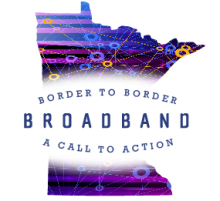Minnesota Broadband Conference February 4 - 5
Mark your calendar to attend Boarder to Boarder Broadband: A Call to Action on February 4 - 5 in St. Paul, Minnesota. The event is sponsored by the Blandin Foundation and a long list of organizations concerned with connectivity, economic development, and education ni Minnesota.
ILSR's Chris Mitchell will be presenting on February 5 as part of 9:15 CST Breakout Session, Broadband Infrastructure Development. Other Breakout Sessions are Digital Inclusion, Business and Economic Development, and Applications. A detailed agenda and speakers list is available [PDF].
A description of the conference from the registration page:
The time is ripe for Minnesota legislators and residents to have a “So what? Now What?” conversation about our shared aspirations for Border to Border Broadband:
- The Governor’s Broadband Task Force is issuing their 2013 report and recommendations soon.
- The director of the Office of Broadband Development will be in place in January 2014
- Minnesota state legislators have been touring rural areas to hear directly from Minnesotans about their technology needs and dreams.
Conversations have been happening but…What does it all add up to?
The event will be at the RiverCenter in downtown St. Paul. Attendee tickets are $120 ($60 per day) and Exhibitors pay $300 or $60 if your organization is a nonprofit. You can secure your ticket by registering online. See you there!


